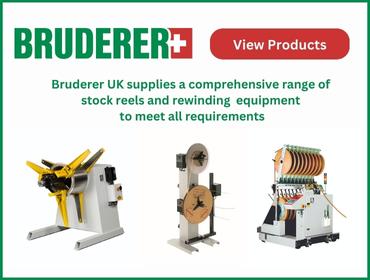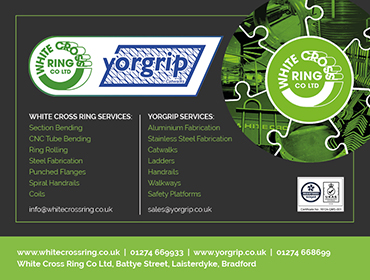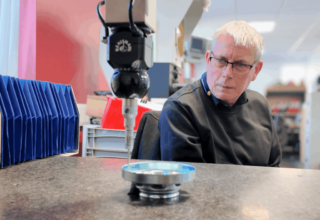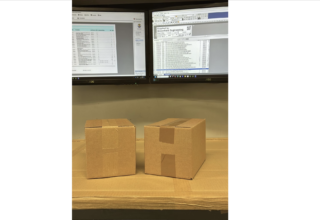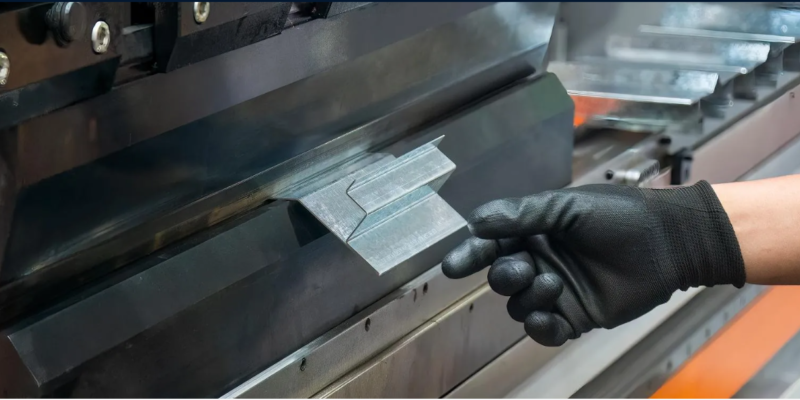
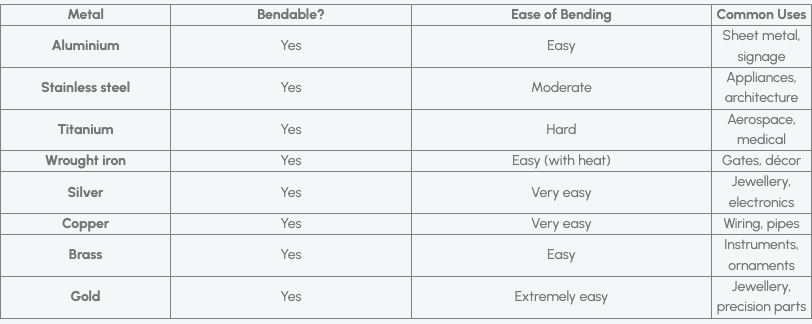
It’s a question that comes up repeatedly. Whatever the nature of the task you’re looking to undertake with metal properties, you may be wondering if bending metal to complete it is possible or likely to be successful.
Metal is a core material used in countless ways for manufacturing, construction, design and DIY projects. This guide will explore which metals can be bent, what factors impact bendability and how to approach different types of metal to understand how each reacts to force and temperature.
The Basics of Metal Bending
At its foundation, metal bending is literally that, bending of metal, or sometimes folding, to create a desired angle or shape without breaking it. Metals are malleable as they consist of layers of ions that can slide over one another when the material is pressed, bent or hammered. Some metals need to be heated, some can be cold pressed, and usually they need to be manipulated in a press brake or a folding machine to achieve the finished, desired shape, although decorative work or thinner metals can even be manually bent. Some of the main factors that impact how easily, or effectively, a metal can be bent such as:
- Ductility – more ductile metals can bend without cracking
- Hardness – the harder the metal, the more resistant to bending
- Thickness – thicker metals may require specialised tools or more force
Can Aluminium Be Bent?
The short answer is yes, but there are many factors to take into consideration when asking ‘Can aluminium be bent?’. Aluminium is a relatively easy material to bend as it is malleable, which is why it’s used for so many products. The alloy type, thickness and temper of the aluminium will impact how bendable it is. For example, 5052 aluminium is highly malleable and is commonly used in sheet form for bending applications such as boat, ship, aircraft and other vehicle parts or manufacturing and engineering parts. However, 6061 aluminium is stronger but prone to cracking unless it’s in a softer temper.
When bending aluminium, it’s vital to choose the correct alloy, bend radius and technique and temper to avoid racking and ensure the final result is a high-quality bend and finished product. Aluminium is one of the most versatile and forgiving metals to work with, which makes it perfect for industrial, engineering and DIY projects. It is corrosion-resistant, and its high conductivity properties make it ideal for so many uses, but the bending process needs to be approached with expertise to manage it properly and guarantee a flawless result.
Can Stainless Steel Be Bent?
Stainless steel can be bent while cold, but also when heated, although it may need more heat than other metals. As stainless steel is a tougher material than aluminium, it’s frequently used as a structural material, but this very toughness can make it harder to work with or bend. As stainless steel can become harder as they are heated or bent, it means that making repeated adjustments becomes more difficult to manage.
Another challenge when considering if stainless steel can be bent is that it tends to rebound, or ‘spring back’, which means that it will try to return to its original shape after bending. The way to compensate for spring back is to overbend and to manage the bend with care, as if the bending angle isn’t sufficient, it can also form cracks. Using specialised press brakes and tools and applying the right heat, or an annealing process for tight bends, will help ensure a great finished product, as will support from experienced professionals.
Can Titanium Be Bent?
Titanium is known for its strength and great malleability, which is why it’s used frequently for aerospace applications, medical devices and implants. However, titanium doesn’t behave like more common metals, and it’s renowned for being one of the most difficult metals to form, with low ductility. To bend titanium, it’s vital to ensure using the right tools, force and temperatures to maintain structural integrity.
Annealing, a process of heating and then allowing it to cool slowly, before bending titanium, can improve its flexibility. Applying a slow, controlled force will then prevent breaking or splitting. Titanium is a much more expensive metal, thanks to its complex extraction processes, high manufacturing difficulty and unique properties that make it desirable for specific applications. Relying on precision engineers and their professional skills can ensure that the bending process is accurately handled and there is no wastage of this expensive metal in the manufacturing processes.
Can Wrought Iron Be Bent?
The term “wrought” is derived from the German work “werken” which means ‘to work’ and that is exactly how wrought iron is created and bent. However, the metal has been used for millennia with evidence of its use dating back to the second millennium BC in modern-day Turkey, where it was used for tools, weapons and ornaments.
So, in answer to the question, ‘Can wrought iron be bent?’ the answer is yes, wrought iron is one of the easiest metals to bend when heated, which is why it’s still a popular metal for decorative structures such as gates and railings. The metal can, in fact, be heated and reheated multiple times without any damage, making it more ductile and malleable. Creating wrought iron involves the process of puddling to remove impurities from the molten pig iron, and then, when it is bent, hammered or forged into the desired shapes and forms, it becomes even stronger and malleable.
Easily Bendable Metals
Brass and copper, along with precious metals such as gold and silver, are extremely malleable metals and can be bent with minimal effort. Silver and gold are chemically inert, making them less reactive and more resistant to corrosion and tarnishing, which, when coupled with the ease of bending and shaping them, makes them ideal for jewellery as they won’t crack or break when moulded into intricate designs.
Copper is a very abundant and cheap metal that is also one of the most ductile metals on Earth. Used for wiring, decorative applications and pipework for plumbing as it is so easily bent. Brass, which is an alloy of copper and zinc, is another highly bendable metal that is relatively resistant to corrosion and tarnishing, and its ease of malleability and ductility make it a great metal for musical instruments, household fittings and décor. These metals are not just easily bendable metals for a functional purpose; they’re also beautiful, and this makes them an ideal choice for applications where form and aesthetics matter equally as much as function.
So, when considering ‘can metal be bent?’, the answer is definitely yes, but how it bends depends on the composition of the individual metal, its condition and what the final result is supposed to look like. From super-malleable copper to ultra-hard titanium, each metal can be bent but needs its own approach, as understanding the properties of ductility, hardness, thickness and ideal bending temperatures and methods is key to a successful outcome.




